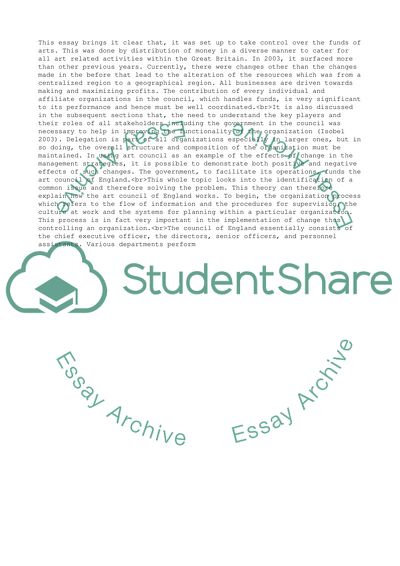Cite this document
(The structure of the Arts Council changed twice in about a decade Essay - 1, n.d.)
The structure of the Arts Council changed twice in about a decade Essay - 1. https://studentshare.org/management/1771475-the-structure-of-the-arts-council-changed-twice-in-about-a-decade-describe-each-change-and-the-advantages-and-disadvantages-of-the-change-in-overall-context-of-the-organizations-policies-and-strategies
The structure of the Arts Council changed twice in about a decade Essay - 1. https://studentshare.org/management/1771475-the-structure-of-the-arts-council-changed-twice-in-about-a-decade-describe-each-change-and-the-advantages-and-disadvantages-of-the-change-in-overall-context-of-the-organizations-policies-and-strategies
(The Structure of the Arts Council Changed Twice in about a Decade Essay - 1)
The Structure of the Arts Council Changed Twice in about a Decade Essay - 1. https://studentshare.org/management/1771475-the-structure-of-the-arts-council-changed-twice-in-about-a-decade-describe-each-change-and-the-advantages-and-disadvantages-of-the-change-in-overall-context-of-the-organizations-policies-and-strategies.
The Structure of the Arts Council Changed Twice in about a Decade Essay - 1. https://studentshare.org/management/1771475-the-structure-of-the-arts-council-changed-twice-in-about-a-decade-describe-each-change-and-the-advantages-and-disadvantages-of-the-change-in-overall-context-of-the-organizations-policies-and-strategies.
“The Structure of the Arts Council Changed Twice in about a Decade Essay - 1”. https://studentshare.org/management/1771475-the-structure-of-the-arts-council-changed-twice-in-about-a-decade-describe-each-change-and-the-advantages-and-disadvantages-of-the-change-in-overall-context-of-the-organizations-policies-and-strategies.


